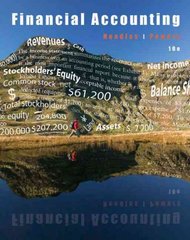Question
Read the case Back to School: Real Estate Development of Off-Campus Student Housingand answer the following question: 1.Qualitatively discuss the benefits and costs of choosing
Read the case Back to School: Real Estate Development of Off-Campus Student Housingand answer the following question:
1.Qualitatively discuss the benefits and costs of choosing Madison as the target market for the proposed luxury student-housing development.
2.Explain the feasibility analysis provided in the case andcritique it as a basis for decision-making. Your critique should include both a discussion of what is wrong with the technique as well as what may be wrong with the assumptions within the specific application of the technique.
3.Suppose instead you were considering developing to a yield on cost. In other words, you would be willing to make an investment into the developmentproject as long as the annual cash flow of the property was at least 5.2% of the totaldevelopment cost, where cash flow is measured at project completion and the timing of development costs is ignored (except for when calculating construction loan interest). Development costs include both hard and soft costs, as well as interest on any construction loan. Assume that Lenard can finance hard development costs with a construction loan that charges 6%interestto be repaid upon project completion. The first drawon the construction loan is made to pay for the demolition, with twelve subsequent drawsevenly spread to cover the remaining hard construction costs (excluding demolition). You may assume that the propertys net operating income (NOI) is growingat 3% per year and that property CapEx is 20% of NOI. Discuss the merits and deficiencies of using this approach to determine the appropriateness of a real estate development project. Justify any additional assumptions you must make to complete your analysis.
4.Develop a pro forma for the completed apartment complex and estimate its value at completion. Justify any additional assumptions you must make to complete your analysis.
5.Estimate the NPV of the development project as a function of the cost of land. Assume that you will always pay the soft costs and that you will makethe draws on the construction loan that you calculated in Q3. Further assume thatthe construction loan itself was zero NPV to the lender and that the risk-free rate is 3%. How much can you pay for the land so that the development is zero NPV? Whatinternal rate of return will a developer achieve witha zero NPV investment into this development project? Justify any additional assumptions you must make to complete your analysis.
6.Now consider the problem as a real option. Assume that a plot of land in Madison gives you the right, but now the obligation, to build this particular luxury fifteen-unit apartment building any time during the next 10 years. The strike priceis the present value of the construction cost, which you calculatedin Q5. You should further assume that these costs are growing at 3% per year. The underlying asset value is currently the price of a similar property valued in Q4if it existed today. Using the binomial option pricing mode, estimate the maximum price you should be willing to pay for the necessary land. At this price, is the NPV you calculated in Q5 positive or negative? Qualitatively explain the relationship between the price of land that delivers a zero NPV in Q5 and the price of land you calculate in Q6. Assume that the risk-free rate is 3%.
Step by Step Solution
There are 3 Steps involved in it
Step: 1

Get Instant Access to Expert-Tailored Solutions
See step-by-step solutions with expert insights and AI powered tools for academic success
Step: 2

Step: 3

Ace Your Homework with AI
Get the answers you need in no time with our AI-driven, step-by-step assistance
Get Started


